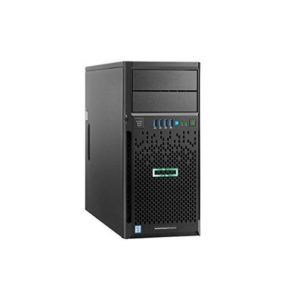Familiarity with desktop computer hardware is a great start. Server hardware likes a lot of the same core components, like memory, capacity, and CPUs. But the comparisons end there – server components are more specialized because they should a more intensive, dedicated function than a typical desktop.
Servers are usually utilized to manage a network’s resources and provide services to the network users. The server hardware model may depend on the server’s dedicated service, as some hardware is better suited for specific targets.
Tower servers, rack server, blade servers, and mainframes individual provide different benefits – keep reading for the data to measure which one is best satisfied for your companies day-to-day processes.
Rack Servers
Just as the title indicates, rack servers are designed to be mounted in a modular rack design for effective management and storage. Rack servers are very accomplished in managing various tasks and workloads, and they can maximize utility in one dedicated location.
A significant advantage to rack servers is the efficiency with which server components can be removed if necessary. Some businesses may aspire to a more modular design for the comfort of replacement – especially if that business runs a massive operation with servers that may become expired at different times.
Because rack server bays are usually stacked tightly, efficient cooling can be a challenge. A dedicated cooling system is necessary to assure no functionality is lost from overheating. Rack servers need a fair amount of cabling, which can be an added challenge – particularly in shorter spaces.
Blade Servers
Blade servers are chassis-based servers related to rack servers, but the more stripped-down design allows for even more space-efficient than rack servers, among other key advantages.
These server systems are comprised of the individual server “blades,” thin dedicated server boards that each have the unique processing power, memory capability, and a simple modular design that provides for easy configurability.
Blade servers allow more processing power and ease of cable management than rack servers, but these benefits come with a more significant price tag. If money is not a concern so much as efficiency and performance are, then blade servers are an excellent option.
Tower Servers
Tower servers are single computers with the practical purpose – they are housed in a standalone right cabinet, or “tower,” much like the tower of a personal desktop computer.
Towers afford their unique advantages. Because of the low interior element density, they are easier to cool than rack or blade servers. The encased design provides room for more hardware or driver installation if required.
While blade servers and rack server feature neat, modular rack designs, tower servers are much less space-efficient. A set of tower servers will be significantly more massive and extra space-consuming than their thinner counterparts. Cable management can be difficult and heavy, and the air cooling from tower fans can be very noisy.
Mainframes
A mainframe is a large-scale machine with an intricate design and huge workload capacity. Mainframes are large machines about the size of a refrigerator or an accumulated washer and dryer. They emphasize many swappable components and are extremely configurable.
Mainframes are technically divided categorically from standard data center servers, as they usually run on their own different operating systems and have a far larger performance capability.
Generally, mainframes are used by industries with high data volume and demand for reliable and protected computing. Mainframe servers are faraway more expensive than any other servers, but they are unique in their resiliency and absolute computing power.
Because of their volume and complexity, mainframe servers will need consistent maintenance from a dedicated service technician. Such maintenance prices may deter an organization, so it is necessary to assess your operations’ order to determine if a mainframe server will benefit.
Maintenance & Management Are Key
Server hardware maintenance is a crucial factor in ensuring an effective and consistent server system. As was discussed in this article, some server designs are more modular than others and are simpler to maintain.
Improperly managed server systems can start-up an organization to a host of concerns, arranging from the difficulty and work time delays to outright information security breaches. Server lifespans can further be cut short or left vulnerable by incorrect cable management or inadequate cooling systems.
A company should have a plan in place to handle the damaged assets. If a server cannot be restored, e-waste recycling can approach data liability concerns and free open area for new assets.
With the usual choice of server and diligent, consistent server management, an organization develops its data security, efficiency, and reliability.






